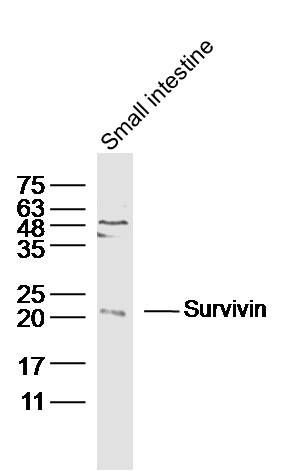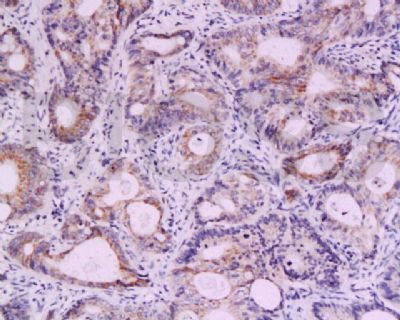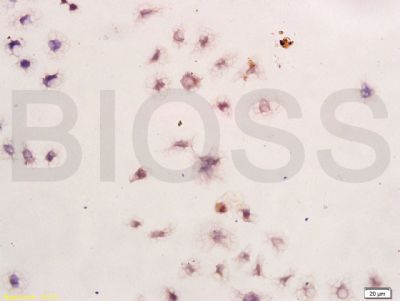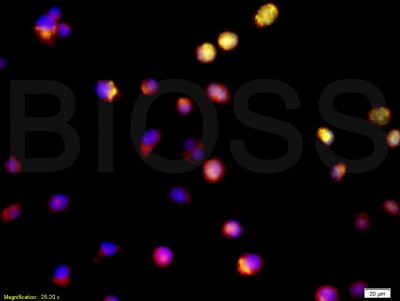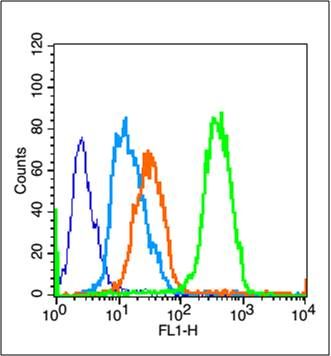Sample: Small intestine (mouse) Lysate at 40 ug
Primary: Anti- Survivin (SL0615R) at 1/300 dilution
Secondary: IRDye800CW Goat Anti-Rabbit IgG at 1/20000 dilution
Predicted band size: 16.5 kD
Observed band size: 20 kD
Tissue/cell: human colon carcinoma; 4% Paraformaldehyde-fixed and paraffin-embedded;
Antigen retrieval: citrate buffer ( 0.01M, pH 6.0 ), Boiling bathing for 15min; Block endogenous peroxidase by 3% Hydrogen peroxide for 30min; Blocking buffer (normal goat serum,SLC0005) at 37℃ for 20 min;
Incubation: Anti-Survivin Polyclonal Antibody, Unconjugated(SL0615R) 1:200, overnight at 4°C, followed by conjugation to the secondary antibody(SP-0023) and DAB(SLC0010) staining
Tissue/cell: human Gastric cancer cells;
Block endogenous peroxidase by 3% Hydrogen peroxide for 30min; Blocking buffer (normal goat serum,SLC0005) at 37℃ for 20 min;
Incubation: Anti-Survivin Polyclonal Antibody, Unconjugated(SL0615R) 1:300, overnight at 4°C, followed by conjugation to the secondary antibody(SP-0023) and DAB(SLC0010) staining
Tissue/cell: Human oral squamous cell carcinoma;4% Paraformaldehyde-fixed;
Blocking buffer (normal goat serum,SLC0005) at 37℃ for 20 min;
Incubation: Anti-HPV16-E7 Polyclonal Antibody, FITC conjugated(SL4623R-FITC) 1:200, 37°C, 40min; The secondary antibody was Anti-Survivin Polyclonal Antibody, Cy3 conjugated (SL0615R-Cy3)used at 1:200 dilution for 40 minutes at 37°C. DAPI(5ug/ml,blue,SLC0033) was used to stain the cell nuclei
Blank control (blue line): U251
Primary Antibody (green line): Rabbit Anti-Survivin antibody (SL0615R)
Dilution: 1μg /10^6 cells;
Isotype Control Antibody (orange line): Rabbit IgG .
Secondary Antibody (white blue line): Goat anti-rabbit IgG-FITC
Dilution: 1μg /test.
Protocol
The cells were fixed with 70% ethanol (Overnight at 4℃) and then permeabilized with 90% ice-cold methanol for 30 min on ice. Cells stained with Primary Antibody for 30 min at room temperature. The cells were then incubated in 1 X PBS/2%BSA/10% goat serum to block non-specific protein-protein interactions followed by the antibody for 15 min at room temperature. The secondary antibody used for 40 min at room temperature. Acquisition of 20,000 events was performed.
|
